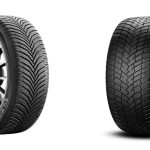When venturing into the world of diesel trucks, the Powerstroke engine often stands out as a beacon of reliability and performance. However, not all years of the 7.3 Powerstroke have sailed smoothly. We’ve all heard the tales of certain models that seem more prone to issues than others, leading many enthusiasts and potential buyers to tread carefully. It’s a journey filled with questions and, yes, a bit of caution.
Navigating the waters of the 7.3 Powerstroke years can be daunting, especially for those new to the diesel scene or looking to make a wise investment. We’re here to shed light on those specific years that might be best avoided and why. Armed with the right information, we can all make better decisions, ensuring our adventures on the road are as smooth and enjoyable as possible. Let’s dive in and explore which 7.3 Powerstroke years to steer clear of and ensure your next diesel purchase is a sound one.
Understanding the 7.3 Powerstroke Engine
Continuing from the discussion on the well-regarded yet occasionally problematic 7.3 Powerstroke engine, it’s essential for us to delve deeper into what makes this engine stand out, as well as the instances that merit caution. Manufactured by Ford from 1994 through 2003, the 7.3 Powerstroke has been a staple in Ford’s lineup of diesel trucks, gaining acclaim for its durability and power output.
At its core, the 7.3 Powerstroke is a direct injection, turbocharged diesel engine. Renowned for its reliability, this engine can deliver impressive performance, especially with proper maintenance. One of the key features that contribute to the 7.3 Powerstroke’s popularity is its capability to handle high mileage with fewer issues compared to other engines of its era. This durability stems from robust engineering, including a strong block and a high-quality injection system.
However, not all is perfect in the land of 7.3 Powerstroke engines. Certain years have presented challenges to owners, primarily due to specific parts or factory defects that emerged over time. Issues such as faulty cam position sensors, failing injector pressure regulators, and problems with engine wiring harnesses have been noted. These concerns, while often correctable, can lead to unexpected downtime and repair costs, affecting the overall reliability of the vehicle.
Understanding these nuances is vital for anyone considering a 7.3 Powerstroke-powered vehicle. Armed with this knowledge, potential buyers can make informed decisions, identifying models that might require extra attention or certain years to potentially avoid. It’s this combination of performance and precaution that shapes the 7.3 Powerstroke’s narrative in the diesel community. Keeping these factors in mind ensures enthusiasts and new buyers alike can enjoy the robust experience that a well-maintained 7.3 Powerstroke engine offers, while being wary of the models that might carry inherent risks.
The Best Years for the 7.3 Powerstroke
Navigating through the years of the 7.3 Powerstroke, we’ve zeroed in on those standout years that promise the most in terms of reliability, performance, and overall satisfaction. Through diligent research and the compilation of user experiences, it’s clear that certain years shine brighter than others for owners of these powerhouse engines.
First on our list, the 1999 to 2000 models stand out for their refinement in power delivery and the introduction of key upgrades over the earlier versions. During these years, Ford made significant improvements, including stronger connecting rods and the elimination of certain issues that plagued the 1994 to 1997 models, like turbo up-pipe leaks. These enhancements contribute to an overall more robust and reliable engine.
Next, the 2001 to 2003 models further solidify their place as top picks. These years mark the peak of the 7.3 Powerstroke’s development before being replaced by the 6.0 Powerstroke in mid-2003. Notably, these engines benefited from advanced electrical systems and improved manufacturing processes, making them less prone to the wiring harness and sensor issues seen in some earlier years. The introduction of more efficient turbochargers and injection systems during this period also helped these years’ models achieve better fuel economy and smoother operation.
Identifying the best years for the 7.3 Powerstroke boils down to finding the sweet spot where Ford’s continuous improvements culminated in an engine that’s not just powerful but also reliable for the long haul. The 1999 to 2003 models represent this pinnacle, offering a mix of performance upgrades and refinements that dodge many of the pitfalls seen in the engine’s earlier iterations. For enthusiasts and potential buyers looking to get behind the wheel of a truck powered by the 7.3 Powerstroke, targeting these years can lead to a rewarding ownership experience, marrying classic diesel power with a touch more reliability and efficiency.
7.3 Powerstroke Years to Avoid
While we’ve celebrated the high points of the 7.3 Powerstroke engines, particularly from 1999 to 2003, it’s also crucial to be aware of certain years that might not hit the mark in terms of reliability and performance. Our focus here shifts to identifying the years that potential buyers might want to approach with caution if they’re in the market for a diesel truck with a 7.3 Powerstroke engine.
First, the initial production years, mainly 1994 and 1995, come with their sets of challenges. During these years, the engines often faced issues related to the turbochargers and E4OD automatic transmission failures, concerns that were significantly improved in later models.
Second, although not a specific year, early production models of the 1995 trucks equipped with the 7.3 Powerstroke engine occasionally experienced camshaft position sensor (CMP) failures. This problem was recurrent enough to warrant a special note, as it could lead to sudden engine shutdowns.
Lastly, it’s worth mentioning that some models in the later years before the revamp in 1999 might still have inherited some of the teething problems from the earlier years. These include minor but notable issues like faulty sensors and problematic wiring harnesses that could impact the overall dependability of the vehicle.
In contrast, the 1999 to 2003 models stand out for their improvements and enhancements, which addressed many of the issues found in the earlier years. These models feature more robust components, such as stronger connecting rods and advanced turbochargers, contributing to their reputation for reliability and performance.
By spotlighting these years to avoid, we aim to guide enthusiasts and potential buyers towards making informed decisions. Opting for the 1999 to 2003 models of the 7.3 Powerstroke engine will likely provide a more satisfying and trouble-free ownership experience.
How to Identify a Problematic 7.3 Powerstroke
Navigating through the years to find a good 7.3 Powerstroke engine involves knowing which signs indicate potential issues. Let’s start by listing the symptoms that suggest a 7.3 Powerstroke might be problematic, focusing on the engines from 1994 to 2003.
First, unusual noises, especially knocking or ticking, often point toward problems. These can stem from various issues like injector failure or problems with the piston rings.
Second, excessive smoke from the exhaust, whether it’s black, white, or blue, can signal trouble. Black smoke usually indicates incomplete combustion, white smoke suggests coolant burning, and blue smoke points to oil burning.
Third, reduced power and acceleration are clear signs something’s amiss. This could be due to turbocharger issues, fuel delivery problems, or air intake restrictions, all of which were noted in some models.
Fourth, engine stalling or rough idling can indicate sensor failures, such as those in the camshaft or crankshaft, which were particularly problematic in the initial years and some later models before 1999.
Lastly, frequent overheat issues can reveal cooling system problems, which are not only inconvenient but can cause severe engine damage if not addressed.
Performing diagnostic tests is crucial if any of these symptoms are present. A professional mechanic can help identify specific problems, whether they’re related to the issues known in certain years or if they’re more isolated incidents.
By keeping an eye out for these symptoms, you’ll be better equipped to identify a 7.3 Powerstroke that might give you problems, particularly if you’re looking at the years that we’ve previously identified as ones to potentially avoid. This knowledge will help ensure you choose a truck that stands the test of time, just like the best models of the 7.3 Powerstroke engine from 1999 to 2003 are known to do.
Alternatives to the 7.3 Powerstroke
Transitioning from the iconic 7.3 Powerstroke years, especially when focusing on models outside the prized 1999 to 2003 window, opens up a vast landscape of diesel engines worthy of consideration. Our insights pivot towards engines that not only match but in some aspects, surpass the reliability and performance benchmarks set by the 7.3 Powerstroke.
First on our radar is the 6.6L Duramax, particularly models from 2006 to 2007 before the stringent emissions controls kicked in. These years are applauded for their balance of power and efficiency, making them a compelling choice for diesel enthusiasts seeking an alternative to the 7.3 Powerstroke.
Another powerhouse not to overlook is the Cummins 5.9L, specifically the iterations from the 2004.5 to 2007 model years. Known for their robust build and ability to rack up miles with minimal issues, these engines cement their status as a go-to for those valuing longevity and raw towing power.
For individuals eyeing a balance between modern features and the reliability akin to the 7.3 Powerstroke, the Ford 6.7L Powerstroke engines from 2011 and onward present an intriguing option. With significant advancements in technology and performance, these newer models offer a refined experience without skimping on the durability Ford’s diesels are known for.
Diving into alternatives requires assessing what you value most in a diesel truck, be it towing capacity, fuel efficiency, or advanced technological integrations. Each engine we’ve highlighted brings its unique strengths to the table, illustrating the diverse options available to those exploring beyond the 7.3 Powerstroke years known for potential issues. Engaging with knowledgeable communities and professionals can further tailor your search, ensuring you find a diesel engine that fits your specific needs while steering clear of years with notable drawbacks.
Conclusion
We’ve taken a deep dive into the 7.3 Powerstroke’s legacy, pinpointing its highs and lows. While we celebrate the engine’s peak years from 1999 to 2003, we also recognize the value in looking beyond for those in search of the perfect diesel truck experience. Whether your heart is set on a 7.3 or you’re considering the robust alternatives like the Duramax, Cummins, or newer Powerstrokes, there’s a world of power and efficiency waiting for you. Remember, the best choice depends on what you need from your truck. So let’s keep our options open and our adventures on the horizon. Here’s to finding the diesel engine that powers your dreams!
Related Posts:
- 7.3 Powerstroke Years to Avoid: A Comprehensive Guide for Truck Enthusiasts
- Can You Go to Jail for Slashing Tires: Vandalism Laws and Penalties
- Michelin CrossClimate 2 vs. Michelin Defender T+H: Your Guide to Michelin All-Season Tires
- Michelin Defender 2 vs. CrossClimate 2: All-Season Showdown for Everyday Drivers
- Nissan Sentra Years to Avoid: A Comprehensive Buyer’s Guide
- Sumitomo Encounter AT vs. Falken Wildpeak AT3W: An Off-Road Showdown for Budget-Minded Adventurers“
- Sumitomo vs Michelin Tires: Which One Should You Choose?
- Toyota Charging System Malfunction: Causes and Solutions
- What Does SR Stand for Nissan: Unveiling the Trim Level Meaning
- Yokohama Geolandar AT G015 vs. Falken Wildpeak AT3W: The Ultimate All-Terrain Showdown







